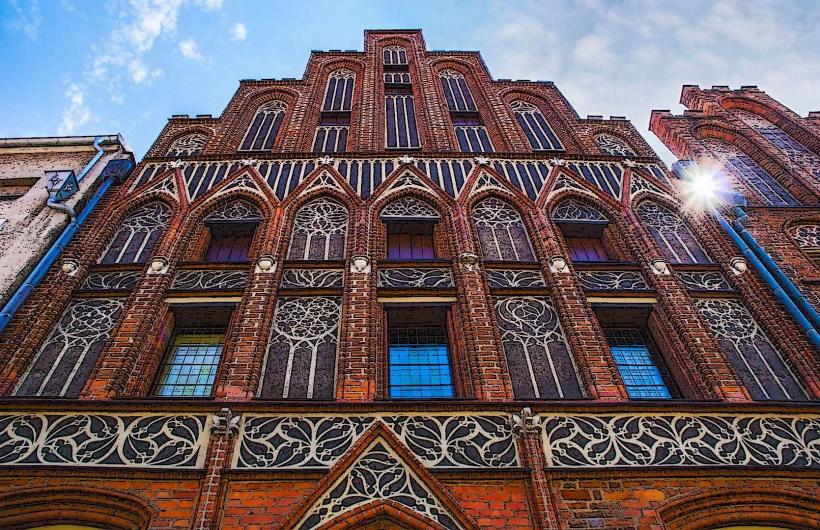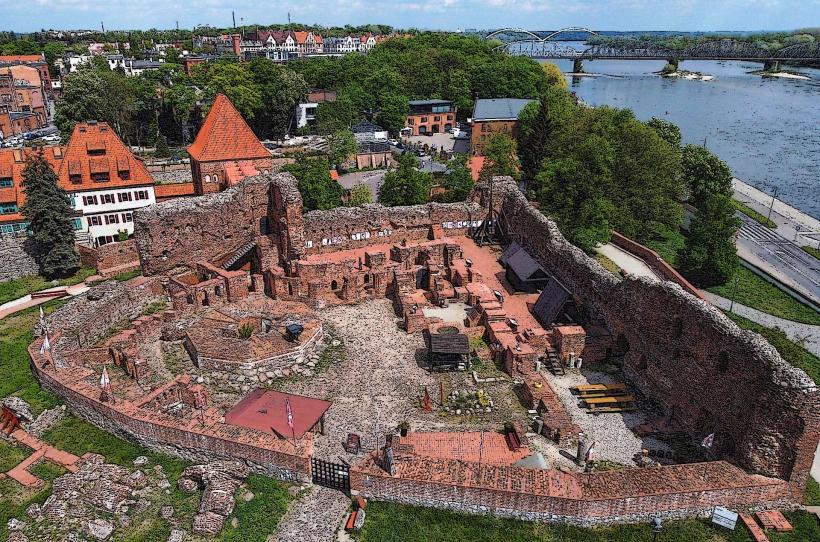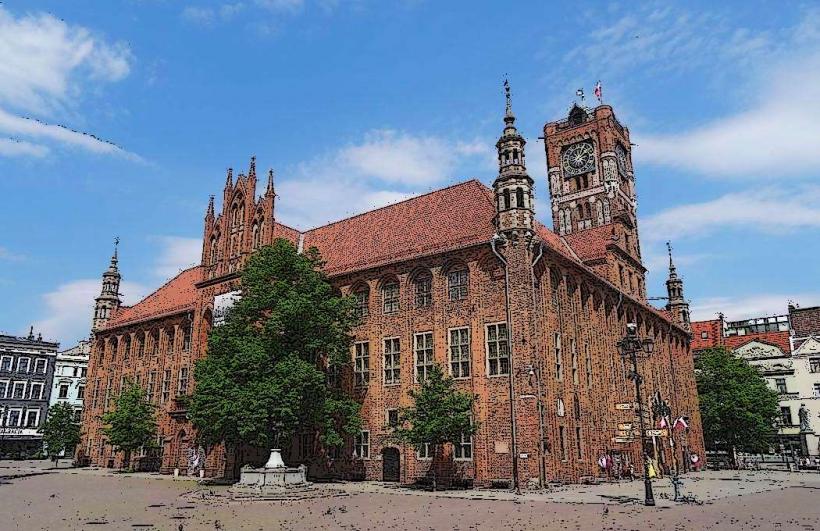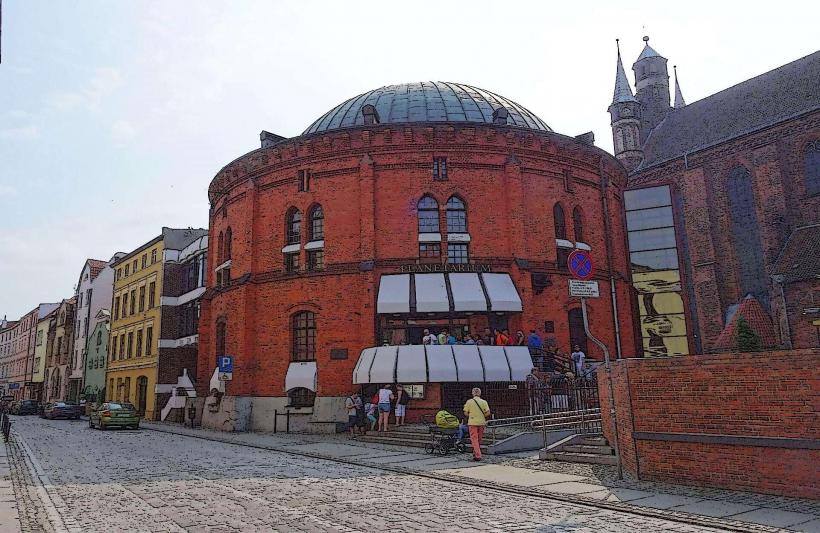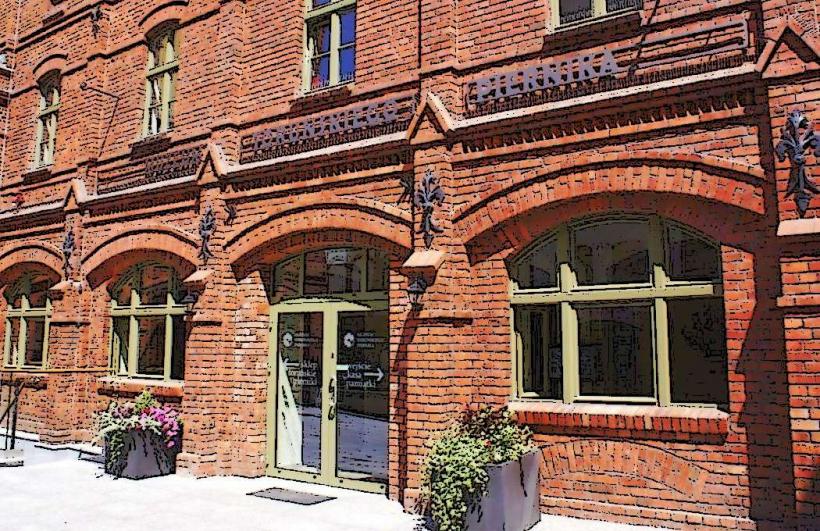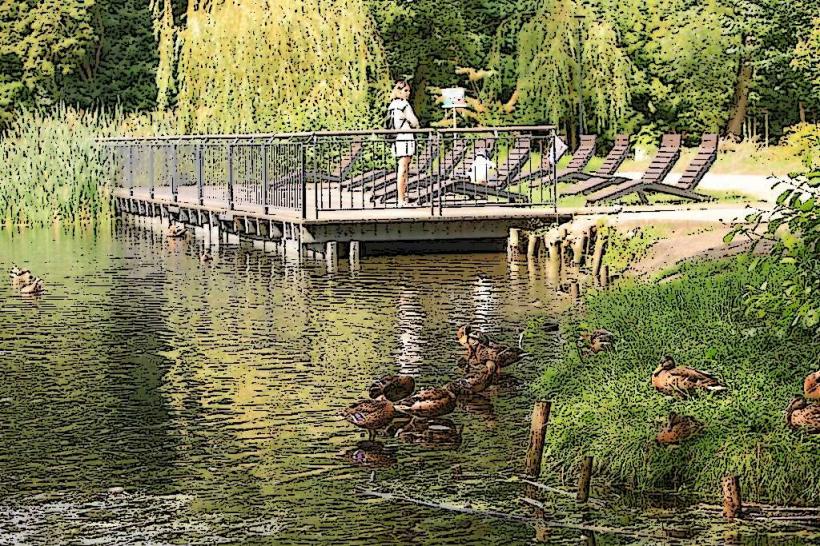Information
Landmark: Leaning Tower of ToruńCity: Torun
Country: Poland
Continent: Europe
Leaning Tower of Toruń (Krzywa Wieża)
The Leaning Tower of Toruń, known in Polish as Krzywa Wieża, is one of the most iconic and peculiar landmarks in the city of Toruń, Poland. It is famous for its distinctive tilt, which makes it a unique attraction in the city's rich medieval landscape.
1. History and Background
Construction: The Leaning Tower of Toruń was built in the 14th century, likely around 1300, as part of the city's defensive fortifications during the time when Toruń was under the control of the Teutonic Knights. The tower was originally part of the city's fortress walls and was used as a watchtower and a belfry for nearby St. Mary's Church.
Architectural Style: The tower is built in the Gothic architectural style, common for the time, using brick as the primary building material. It was constructed as part of Toruń's fortifications, which were designed to protect the city from invaders and to oversee the river.
The Tilt: The most distinctive feature of the Leaning Tower is its noticeable tilt. The tower leans to the east, with a tilt of about 1.5 meters (5 feet) from the vertical. It is not entirely clear why the tower leans, but there are several theories. The most commonly accepted reason is that the soft, marshy soil on which it was built caused it to settle unevenly over time, leading to its tilt.
Repairs and Stability: Over the centuries, the tilt of the tower became more pronounced, but in the 19th and 20th centuries, several stabilization efforts were undertaken to prevent the tower from collapsing. Despite its tilt, the Leaning Tower has remained standing and continues to be one of Toruń's most popular attractions.
2. Architecture and Design
Structure: The Leaning Tower stands at around 15 meters (49 feet) tall. It is a narrow, cylindrical tower made entirely of red brick, with a slightly conical roof. The tower has narrow, arched windows typical of Gothic structures, and its simple yet elegant design is typical of the time.
The Tilt: The leaning effect is the most striking aspect of the tower's design. The tilt is visible to visitors from a distance, and it creates an optical illusion that makes the structure appear as if it's about to topple over. This unusual feature makes it a popular subject for photographs.
The Base: At the base of the tower, there are steps that visitors can climb to reach a viewing platform. The unevenness of the tower’s foundation makes the climb slightly more challenging, but it adds to the experience.
3. Function and Use
Defensive Role: Originally, the Leaning Tower was part of the defensive fortifications of Toruń. It functioned as a watchtower, allowing defenders to spot approaching enemies from a distance. It was also used as a belfry for the nearby St. Mary's Church, helping to signal the time or alert the city to danger.
Tourist Attraction: Today, the Leaning Tower of Toruń is primarily a tourist attraction. Visitors can climb to the top of the tower for a panoramic view of Toruń’s Old Town, including the nearby Vistula River and other historical landmarks.
4. Visitor Experience
Climbing the Tower: The Leaning Tower is accessible to visitors, and it is possible to climb to the top. The climb is made even more interesting due to the tilt, and the experience gives visitors a sense of the tower’s unique position. There are about 50 steps to reach the top, where visitors are rewarded with views of the surrounding area.
The View: From the top of the tower, visitors can enjoy a stunning view of Toruń’s Old Town, with its red-brick buildings, cobblestone streets, and the Vistula River. The nearby Toruń Cathedral and other medieval structures are also visible from the top.
Interactive Exhibits: Inside the tower, there are sometimes exhibitions and informational panels that explain the history of the tower, its tilt, and its role in the city’s defense. The exhibits also delve into the engineering efforts made to stabilize the structure over the years.
5. Theories About the Tilt
There are several theories about the reason for the tower's tilt, with the most popular ones being:
Soil Conditions: As mentioned, the tower was built on soft, marshy ground, and over time, the uneven settling of the foundation caused the tower to lean. This is the most widely accepted explanation for the tilt.
Building Errors: Some historians suggest that the tilt could have been caused by errors during construction, particularly if the workers did not properly account for the ground conditions or did not build the tower with enough stability in mind.
Deliberate Design: There is also a myth that the tilt was intentional, possibly designed as a symbolic feature or for defensive purposes. However, there is little evidence to support this theory, and it is generally dismissed by historians.
6. Nearby Attractions
Toruń Old Town: The Leaning Tower is located in the heart of Toruń’s Old Town, a UNESCO World Heritage Site. Visitors can explore other historical landmarks nearby, such as Toruń Cathedral, the Town Hall, Copernicus House, and the Market Square.
Vistula River: The Vistula River, which runs alongside the Old Town, provides a picturesque backdrop to the Leaning Tower and can be explored by foot or boat.
7. Conclusion
The Leaning Tower of Toruń is a fascinating and unique historical landmark that draws visitors from around the world. Its distinctive tilt and medieval architecture make it a must-see attraction for anyone visiting Toruń, offering an intriguing glimpse into the city’s past and its role as a fortified settlement in the Middle Ages. Whether you’re interested in history, architecture, or simply enjoy visiting quirky landmarks, the Leaning Tower of Toruń is sure to leave a lasting impression.


